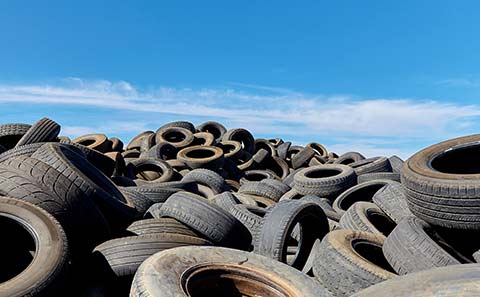A factory tire set is perfect for everyday driving, but it comes with downsides as well. Mainly, they are unable to provide traction in inclement weather conditions. But, what exactly do they offer?
When looking for aftermarket tires, is sticking with an OE tire set worth it?
Vehicle manufacturers select tires that bring out the vehicle’s best performing characteristics to be OE parts. Let’s walk through everything you need to know about factory OE tires.
What is a Factory Tire?
OEM tires are part of the vehicle development process. They are special tires that are created for a specific vehicle model by tire manufacturers. These tires are mounted on new vehicles and are sold together with the vehicle.
A vehicle manufacturer will select original equipment tires based on the vehicle’s performance. These tires are designed to bring out the vehicle’s best driving and performing capabilities. Therefore, an original tire set fits the car the best.
But, are factory OE tires really that good?
How Long do OE Tires Last on Average?
OEM tires, which come with the cars, should last about 50,000 miles. However, often that is not the case. While different conditions, like driving habits and versatile driving conditions, can significantly shorten the tread life, often that is not the case with these tires.
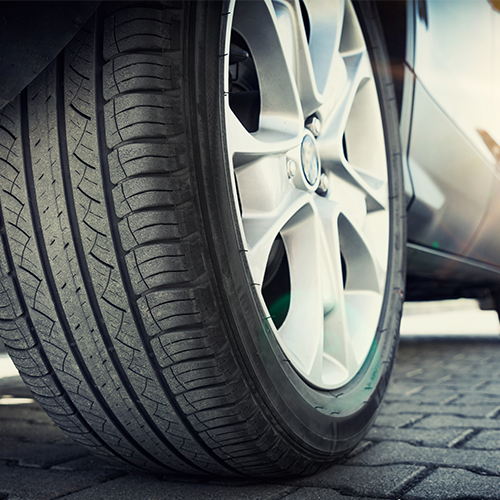
Most often, regardless of the driving conditions, an OE tire set will start showing wear after about 20-30,000 miles. This is not the answer we want to hear to the “how long are tires good for?” question. So, why is this?
Why do New Car Tires Wear Out so Fast?
No, OE tires are not made to be weaker than aftermarket rubber. Simply, they are under too much strain. Vehicle manufacturers put emphasis on bringing out “car characteristics” (read as comfort) when choosing OE tires.
However, often these tires will not be able to handle the strain of driving. This is due to the soft rubber compound used by tire manufacturers. The average mileage for tires is 50,000 miles, but soft compound OE tires do not last that long.
A new set of OE tires won’t be able to handle the driving conditions for long without deforming. Stock tires use soft compounds in order to offer a comfortable drive to customers. Vehicle manufacturers put these OE tire sets on the cars, in order to make a sale – we are more likely to purchase vehicles if they offer a smooth ride.
The Decent but Not-So-Great Characteristics of OEM Tires
As the saying goes: Jack of all trades, master of none. This perfectly portrays OE tires.
For the most part, stock tires are designed to provide the necessary performance in various conditions. Different weather situations, and at times versatile road surfaces, can be conquered easily by OE passenger and truck tires.
The problem comes when you need your tires to handle one specific condition with experience. OE tires on your car will offer adequate traction, even for sports car applications. Yet, for regular everyday driving, they are reliable tire sets.
OEM Tires are Specially Designed for Your Vehicle
One major benefit original equipment tires offer is that they were designed for your specific vehicle. Tire brands develop tires at the request of vehicle manufacturers, optimizing these tire models to perfectly highlight the cars.
Therefore, each car model, often even the various versions of the same car, will have different OE tire sets. It should come as no surprise that SUV/truck tires will not be identical to sports car models, but tire manufacturer development takes it a step further. They notably invest in tire technology, so manufacture the best possible OE tires.
While stock tires do not have long tread lives, they provide the performance you crave for. After driving on an OE set, you might be disappointed in your new replacement tires.
It’s Hard to Find Identical OEM Tires. But is that a Problem?
Your OE tires have reached the end of their tread life. Now what?
Well, finding an exact OEM tire match is hard, almost impossible. Most vehicle manufacturer factories change the stock tires constantly in order to improve them. Even if you may find a set that is highly similar, there is a chance that the replacement tires will not be identical to your previous set.
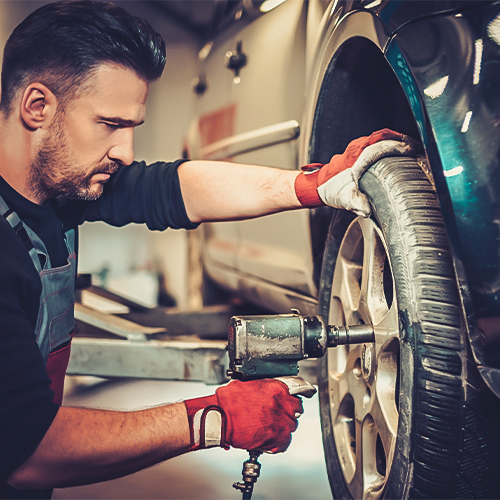
What are you to do?
When it comes to replacement tires, depending on the tire size, you will be able to find OE tires. These were manufactured for specific vehicle manufacturers’ models, but they aren’t necessarily linked to a specific car.
For example, you can find Porsche OE tires, which are the original equipment tires for Porsche vehicles. Additionally, as chiefly major tire brands (like Michelin) manufacture OE tires, they are easier to find.
These tires will not be the same as your OEM tires. Their compound blend, sidewall design, and at times even their tread pattern will be different. However, if you wish to replace the OEM tires with similar ones, OE tires are your best bet.
Here’s How You Check the Quality of Your Factory Tires
Automakers often do not choose the best tires for their cars. For this reason, the best practice is to check the OEM tires mounted on your vehicle as soon as you get them.
Drivers need to know what their cars are equipped with and what they can expect from the tire set. This is both tread life and performance-wise. It might seem like a tedious process, but taking everything into account will save you time and money later.
Look at the Tread Wear Index
Tires are marked with a UTQG rating on their sidewall. This holds the tire treadwear, temperature, and traction rating that will give you some guidance.
All tires, including OE tires, feature this. The tread wear index shows the estimated tread wear rate of the tires and it ranges between 200 and 800. Tires on the lower end of this scale feature a softer compound, while models higher on it were made using harder compounds.
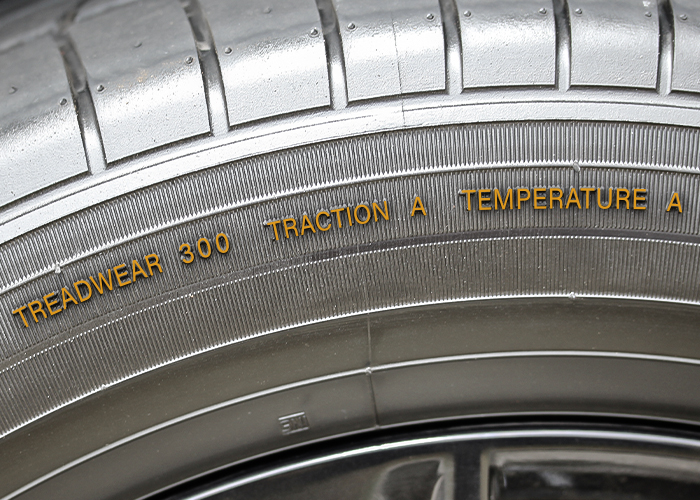
But, what does this mean?
To put it in simpler terms, softer tires offer ride comfort, but their tread life is not the best. In fact, they were out quite quickly. On the other hand, harder tires are more stable and fuel-efficient, and they even last longer.
Check the Performance Rating
The tire’s overall performance is regulated by its performance rating, aka the speed rating. This is a letter located on the sidewall after the tire size and load index. It indicates the utmost speed and durability of a specific tire.
Tires, no matter if they are stock or replacement tires, should not be driven faster than their intended speed. They won’t be able to handle the pressure affecting them during the performance.
Overworking OE tires will result in a shortened tire tread life and possible tire failure.

Confirm the Minimum and Maximum Tire Air Pressure
Tire pressure levels are the end-all, be-all of tires. This is because psi levels affect tires in every possible way imaginable. It has a hand in their performance, handling, tread life, tire fuel efficiency, etc.
Therefore, knowing the maximum and minimum air pressure levels necessary for the tires’ secure performance is crucial. This information can be found on the vehicle’s driver-side door jamb, or in its owner’s manual. If these fail, you can find them on the tire’s sidewall.
Stick within the guidelines, but keep in mind that lower pressure levels offer a smoother ride. For tread wear reasons, try sticking to a bit of a higher psi rating.

Identify the Tire Warranty
Usually, OEM and OE tires do not come with treadwear warranties. This is because of the softer, fast-wearing compound they use to promote a comfortable performance.
However, when you shop for replacement tires, be sure to check out what warranties the tire manufacturer offers. Often tires are sold with specific tread mileage warranties, but you will only be eligible if you follow the tire brands’ guidelines. These are keeping up with:
- Tire rotations
- Tire balancing
- Vehicle alignment
- Tire pressure levels.
Read the Reviews Online
If you wish to know how your OE tires will act down the line, read online reviews about them. Do they offer low rolling resistance? Optimized performance? What’s the tread life?
You will get answers from individuals who have been running these tires for at least a few months. This can give drivers an insight into how the tires will function down the line.
Try finding reviews from people in your area. This will tell you how the tires perform in the specific weather conditions you live in.
How do Manufactures Develop OE Tires?
Specific vehicles are used for specific purposes. Therefore, they will need different tires.
Tire manufacturers and automakers work together to develop tires designed for particular cars. This is done in a manner that enhances the performance of the vehicle, without hindering its handling, traction, rolling resistance, etc.
Companies either create new tires to fit these vehicle models, or take existing tires and tweak them to compliment the performance. As mentioned before, OE tires mounted on a new vehicle provide a little bit of everything. Automaker designers determine what characteristics they need to offer for the specialized vehicle to create the best-fitting tire for them.
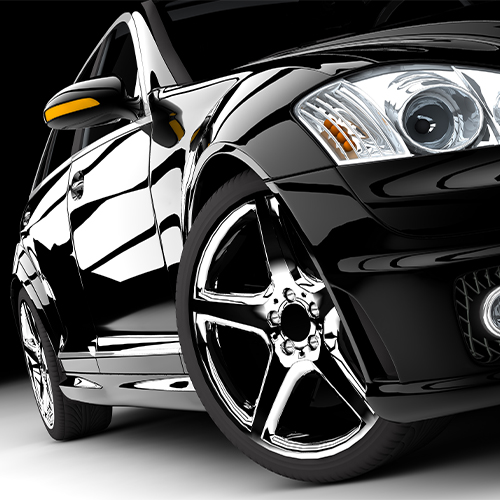
Frequently Asked Questions
How Many Miles do Tires Last?
A good set of tires will typically last around 50,000 miles. However, the tread life will greatly depend on your driving habits, weather conditions, and road surface conditions. Therefore, these factors may shorten the tire’s overall service life.
What Does OE Stand For?
OE stands for “original equipment”. These are the original equipment parts a vehicle was manufactured with. Once the vehicle leaves the factory, any new part added to it is no longer an OE part. OE tires, however, are specific tire models that brands made for specific vehicles, including aftermarket tires.
Difference Between OE and OEM?
OEM is short for “original equipment manufacturer” who produces the vehicles. OE means the original equipment that are vehicle components, including OE tires, which are how the factory manufactured the vehicle. These parts are what originally came with the vehicle. But, any other replacement part is not OE anymore.
Do New Tires Make a Smoother Ride?
Yes, new tires offer a smoother ride. One of their benefits is the deeper tread depth that enables the tire to absorb the shock of driving. This reduces vibrations, ensuring high driving comfort levels for the vehicle’s driver and passengers. Purchasing replacement tires will reduce noise levels as well.
